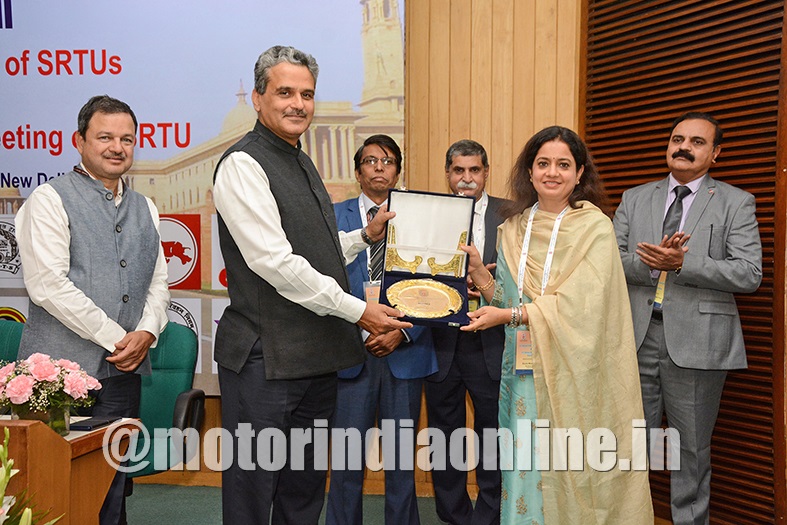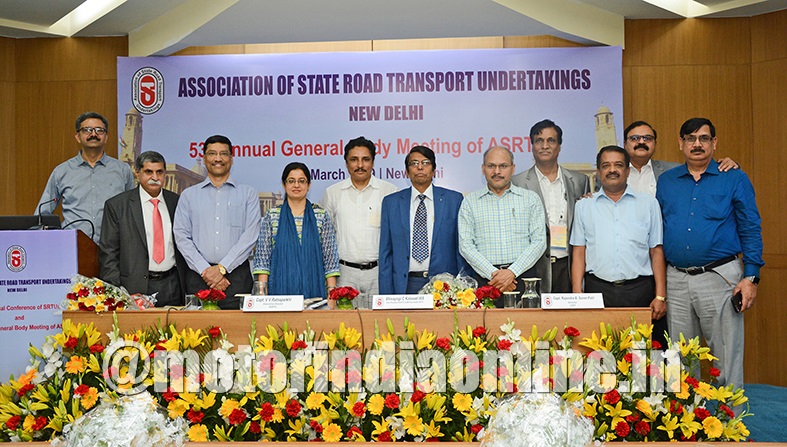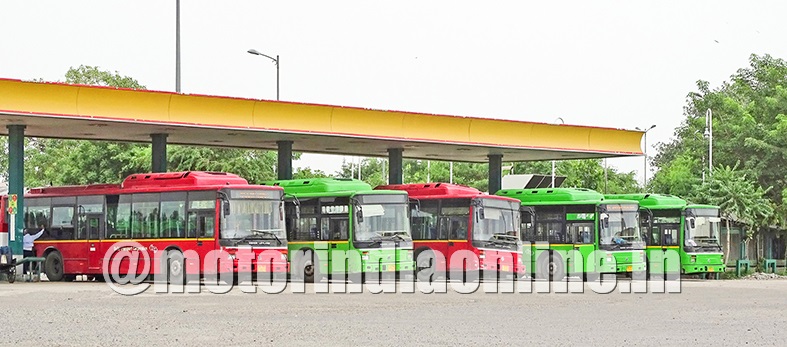The 63rd annual conference of the apex co-ordinating body of State-run bus transport corporations discussed some of the pressing issues, including autonomy in fare revision, operational efficiency, digitization of processes, and induction of electric vehicles, while also spotlighting those best practices among the members in this regard.

Public transportation in India today is characterised by a relentless pursuit of technological change and tailored services to commuters, and State Road Transport Corporations are no exception to this trend. As per statistics, although SRTUs account for just over 10 per cent of total bus fleet plying in the country, they commute over 70 million passengers in a day with an aim of providing essential public service and social welfare, both in terms of affordable fares and routes serving rural and remote locations. Amid whooping financial distress and lack of capital investments relative to private players, the State-owned fleets are increasingly addressing to the changing industry needs and preferences of end-users with alacrity.
At the helm of affairs is ASRTU, established in 1965 to bring together all the SRTUs on a common platform with the aim of pooling their resources and knowhow to deal with various problems they face and help them improve their performance. The body, representing some 62 members from various parts of the country, is delivering valuable services to the SRTUs in addressing the changing demands of public transportation, by way of creating various schemes and models for improvements and innovations and collective bargaining with State and vendors. In March this year, the 63rd annual conference of ASRTU was held in New Delhi.
Four Issues of Importance
The Executive Director of ASRTU, Capt (Retd.) Vinod Vasant Ratnaparkhi, in his welcome address, drew the attention of the conference to four key issues that concern the SRTU fleets in the country. The first aspect, according to him, is the augmentation of public transport in the country. “There is a need for sufficient number of buses with adequate frequency and visibility on road, which is totally dependent on the financial health of SRTUs. This calls for stringent monitoring of operational efficiency and revenue health”, he noted.
Secondly, he called for greater autonomy to SRTUs in terms of fare revisions, an enhanced control over fares based on the soaring input costs and operation expenses. Thirdly, he asked the stakeholders to revisit the provisions of the Motor Vehicle and various State Acts that concern SRTUs, especially those concerning capital-aids from governments. He added that ASRTU has formed a committee to work out models and leverage share capital to bring about financial stability, professionalism, accountability and capital expansion.

Lastly, he vouched for the induction of new electric vehicles and upgradation of the existing vehicles to alternative fuels, including CNG, bio-CNG, and ARAI-certified fuel additives. “We have to push our fleets into greener technologies and move towards zero-emission. ASRTU has already finalised rate contracts on leasing of electric buses. In another six months or so, we hope for better standardisation of technology and price stabilisation of products from multiple vendors, which can give a boost to EV adoption”, he observed.
Towards digitisation
Adding to the discussions, the outgoing President of ASRTU, Mr. Yudhvir Singh Malik, suggested that SRTUs to pursue variable rate contracts model for faster and cost-effective adoption of EVs, in which the contracts can be adjusted every quarter. At a macro level, he called out to policy makers and other stakeholders to support substitution of private vehicles with public transport. “This is the need of the hour, and in the process, SRTUs may have to play a greater role”, he added.
“SRTUs are performing an enormous function of providing key mobility services to masses as a social obligation. We play an immense role in sustaining everyday lives of people and the whole economy, therefore we have to adapt to the changing business scenario and improve our service delivery so as to stay relevant”, said Mr. Shivayogi C. Kalasad, Vice President of ASRTU. At the conference, the association awarded top performing SRTU fleets in FY2017-18, on various operational and service delivery parameters.
Speaking at the conference, Mr. Sanjeev Ranjan, OSD – MoRTH and the incoming President of ASRTU, said: “Changing times in public transportation is making digitisation the kingpin of the process. With the private sector expanding in full swing, digital transformation of the operational processes of SRTUs is crucial”.
He also called for State-owned fleets to adopt international best practices and finance models for sustainability of revenue streams, including that of non-fare revenues from development of ‘bus ports’ at key depots using the PPP model.
